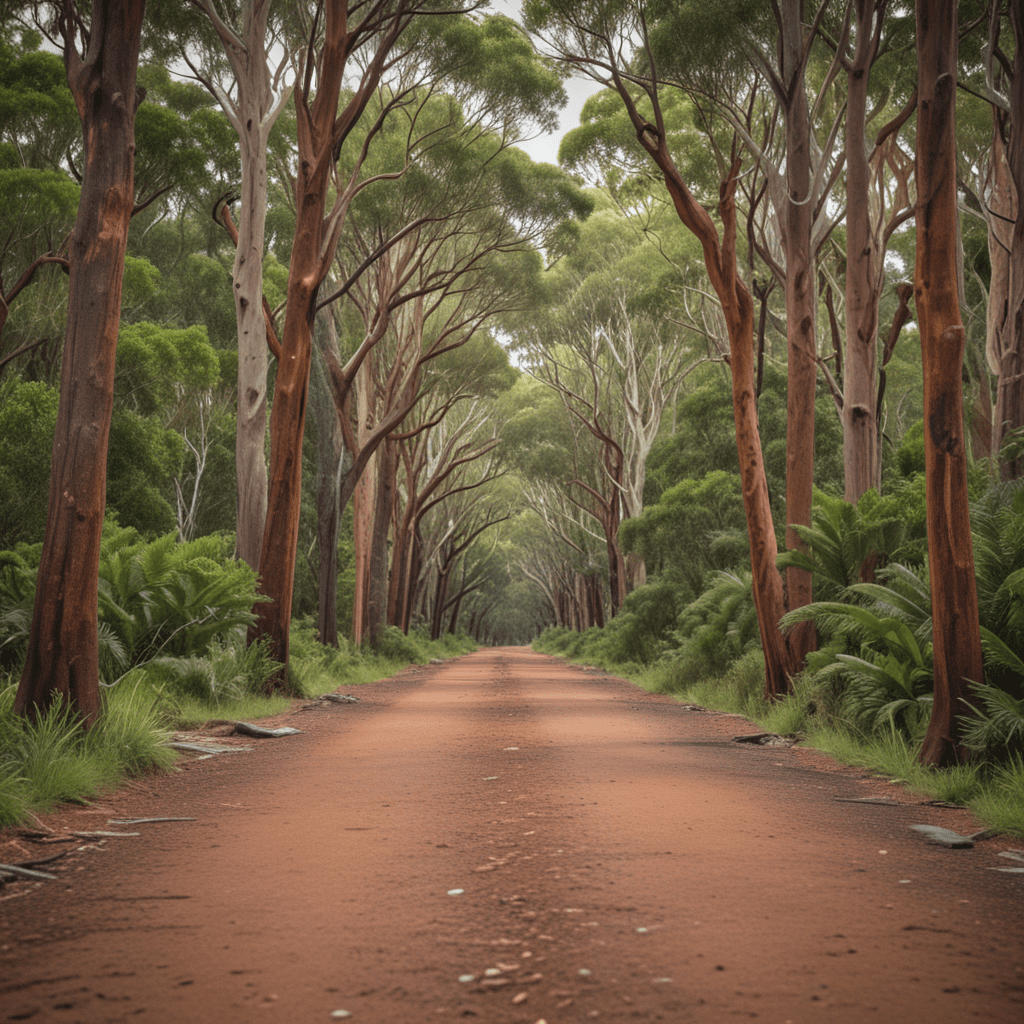
Introduction: Australia's Natural Wonders and Eco-Tourism
Nestled amidst the Southern Hemisphere, Australia boasts a mesmerizing tapestry of natural wonders that beckon travelers seeking adventure and eco-friendly experiences. From the azure waters of the Great Barrier Reef to the enigmatic landscapes of Uluru, Australia's national parks offer a sanctuary for wildlife and a paradise for nature enthusiasts. Eco-tourism in these parks promotes sustainable travel while providing a unique window into Australia's rich biodiversity and cultural heritage.
The Great Barrier Reef: Snorkeling and Diving Paradise
Australia's iconic Great Barrier Reef is a vibrant underwater wonderland, teeming with an astonishing array of marine life. Snorkeling and diving enthusiasts can immerse themselves in the crystal-clear waters, encountering colorful coral gardens, graceful sea turtles, and playful dolphins. Snorkeling tours offer a breathtaking glimpse into the reef's shallows, while scuba diving allows adventurers to explore the depths, discovering hidden caves and witnessing the reef's awe-inspiring underwater landscapes.
Uluru-Kata Tjuta National Park: Exploring Sacred Aboriginal Sites
Uluru-Kata Tjuta National Park, home to the iconic Uluru (Ayers Rock) and Kata Tjuta (The Olgas), is a spiritual heartland for the Anangu Aboriginal people. Visitors can embark on guided walks, uncovering the sacred stories and traditions interwoven with these ancient rock formations. Cultural tours provide insights into Aboriginal art, dance, and ceremonies, offering an authentic and respectful encounter with Australia's rich Indigenous culture.
Daintree Rainforest: Birdwatching and Wildlife Encounters
The Daintree Rainforest, a UNESCO World Heritage Site, is the oldest continuously surviving rainforest on Earth. It is a vibrant haven for birdwatchers, with over 400 species inhabiting its lush canopy. Birdwatching tours lead visitors through ancient trees and along winding trails, offering glimpses of elusive cassowaries, brightly colored parrots, and majestic eagles. Wildlife enthusiasts can also encounter kangaroos, wallabies, and crocodiles in this awe-inspiring natural sanctuary.
Fraser Island: Dingoes and Sandy Beaches Adventure
Fraser Island, the world's largest sand island, enchants visitors with its pristine beaches, towering rainforests, and resident dingoes. Adventure-seekers can embark on four-wheel-drive excursions, traversing sandy shores and exploring freshwater lakes nestled within the island's rugged interior. Wildlife enthusiasts can spot dingoes roaming the beaches, observe sea turtles nesting along the coast, and encounter humpback whales during their annual migration.
6. Kakadu National Park: Ancient Aboriginal Art and Crocodile Cruises
Kakadu National Park, a UNESCO World Heritage Site, is home to a mesmerizing blend of pristine wilderness and ancient Aboriginal rock art. Visitors can explore towering sandstone cliffs adorned with intricate paintings that tell the stories of the local Jawoyn people. Guided tours provide insights into the cultural significance of these artworks and the deep connection between the Aboriginal people and the land. Wildlife enthusiasts can embark on crocodile-spotting cruises along the park's mighty rivers, observing these prehistoric reptiles in their natural habitat.
7. Blue Mountains: Rainforest Hikes and Majestic Views
The Blue Mountains, a short drive from Sydney, offer a breathtaking escape into a world of towering sandstone escarpments, cascading waterfalls, and lush rainforests. Hiking trails wind through ancient eucalyptus forests, leading to panoramic lookouts that showcase the region's rugged beauty. Visitors can explore the scenic Blue Mountains National Park, marveling at the iconic Three Sisters rock formation and encountering curious kangaroos and wallabies along the way.
8. Kangaroo Island: Wildlife Watching and Seal Colony Encounters
Kangaroo Island, a sanctuary for wildlife, enchants visitors with its pristine beaches, diverse ecosystems, and abundant marine life. Wildlife enthusiasts can witness playful sea lions at Seal Bay Conservation Park, where they can get up close to these charismatic creatures. Guided tours offer insights into the behavior and biology of these fascinating animals. Adventure-seekers can embark on wildlife safaris, spotting kangaroos, koalas, and other native species in their natural habitat.
9. Maria Island: Wildlife Sanctuary and Coastal Explorations
Maria Island, a secluded national park off the coast of Tasmania, is a haven for wildlife and nature lovers. Visitors can encounter wombats, pademelons, and kangaroos roaming freely in this unspoiled sanctuary. Guided tours lead to the island's historic convict ruins and provide glimpses into its intriguing past. Coastal hikes offer breathtaking views of Tasmania's rugged coastline, with opportunities for whale watching and spotting seabirds.
10. Conclusion: Sustainable Adventures in Australia's National Parks
Eco-tourism in Australia's national parks provides a responsible and enriching way to experience the country's awe-inspiring natural wonders. By embracing sustainable practices, visitors can minimize their environmental impact while supporting local communities and preserving these precious ecosystems for future generations.
FAQs:
What is eco-tourism?
Eco-tourism is a form of responsible tourism that focuses on minimizing environmental impact while promoting cultural understanding and economic benefits for local communities.Why is eco-tourism important?
Eco-tourism helps protect fragile ecosystems, supports sustainable practices, and provides economic opportunities for local communities.How can I practice responsible eco-tourism?
Respect the environment by staying on designated trails, avoiding single-use plastics, and minimizing waste. Support local businesses and participate in conservation initiatives.
- What are some eco-friendly activities available in Australia's national parks?
Guided wildlife tours, birdwatching, snorkeling, hiking, and cultural experiences are all excellent ways to explore national parks while minimizing environmental impact.


